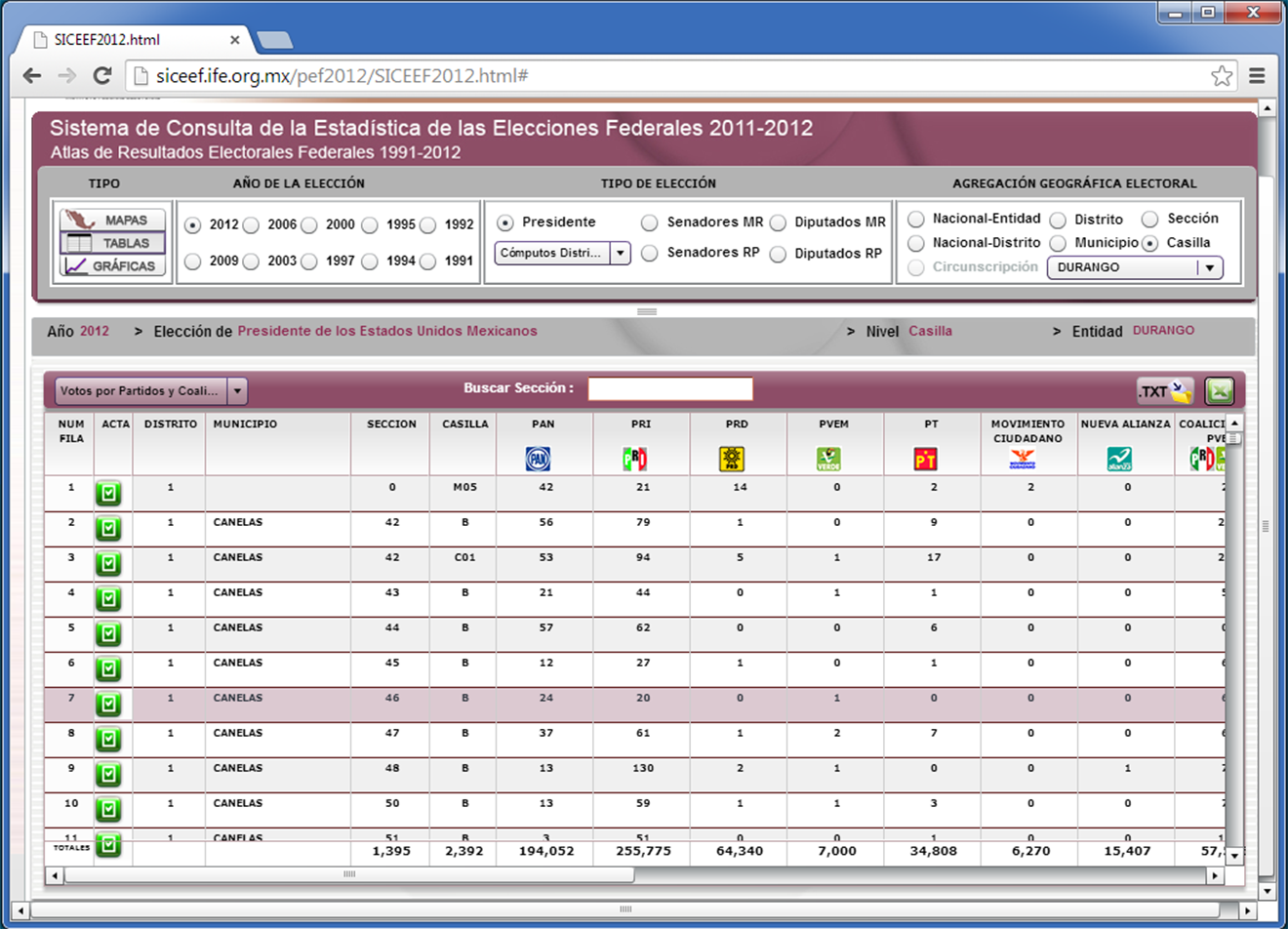Mexico
Election cycle assessed: July 1, 2012 general elections (presidential and legislative).
Electoral management body processes - Decision making: Mexico's National Electoral Institute (INE) has an exceptional level of transparency in its decision making processes, providing a wide variety of data on its proceedings, meetings, resolutions and agreements. It provides meeting session transcripts, agendas, and recorded audio and video. Live streams of meeting sessions are also available.
Party registration information: Mexico's data on party registration meets many of the open election data principles. It provides granular data on each party's status and the relevant resolutions regarding party registration decisions. Mexico also provides a list of all deregistered parties and, unlike most countries, a justification of why each was deregistered. Deregistration data is provided in bulk, although it is only made available in an HTML table and, therefore, is less analyzable than if it were provided in a machine-readable format.
Election turnout and results: Mexico's turnout and election results data is some of the most open in the world. Both preliminary and final election results and turnout data can be downloaded in non-proprietary, analyzable formats at the primary (polling station, or casilla) level. In addition, Mexico publishes image files of handwritten preliminary and final tally sheets from each polling station, which provides users the ability to compare the image files to the digitally-recorded information available for download. Details on each are below.
- Preliminary turnout and results data is available at all geographic levels via the interactive, web-based PREP system, as well as through a downloadable set of compressed, nonproprietary files (gzip) that provides analyzable data at the primary level. The user can also access image files of handwritten polling station-level preliminary results tally sheets.
- Final turnout and results data is made available on the web-based ATLAS database. Data is available at all geographic levels, and polling station-level data can be downloaded in bulk for each of the 32 states in either nonproprietary (plain text) or proprietary (Excel), analyzable format (see Figure 3 below). There is not a bulk download of all nationwide polling-station level data, however. The site also publishes image files of handwritten final tally sheets at the polling station level.
- Historical election results data is also available on the ATLAS website, dating back to 1991. Some of the earlier elections do not have polling station-level data, but more recent elections have the same type of final results and turnout data available as the 2012 election data mentioned above.
Figure 3: Mexico - Final Polling Station-level Results and Turnout Data for Mexico's 2012 Elections
Results and turnout figures can be accessed at any geographic level. Tally sheet image files can be accessed for each polling station ("casilla") by clicking on the green checkmark button next to each polling station data. Data can be downloaded in plain text or Excel on the right side of the page.
Voter education and Election results -- External voting: Mexico provides some of the most comprehensive and open data on external voting of any country in Latin America. It developed a "microsite" that provides useful, user-friendly information on how, when and where to register to vote, as well as how, when and why to vote. The site also provides disaggregated, granular data on external voting results and turnout, as well as extensive visualization of the data through charts, tables and graphs. This data, however, is only available in non-analyzable format (PDF).

